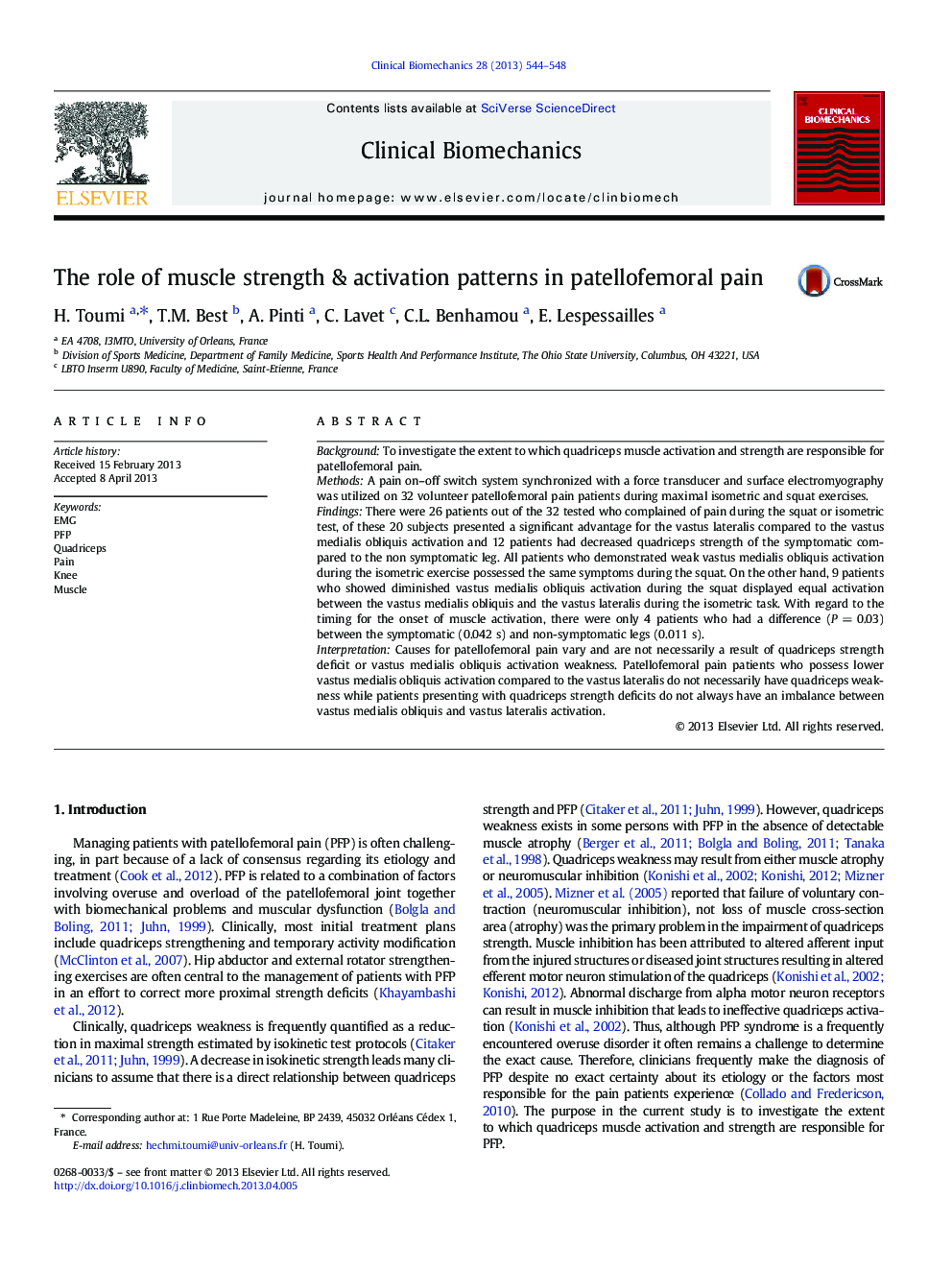| Article ID | Journal | Published Year | Pages | File Type |
|---|---|---|---|---|
| 4050702 | Clinical Biomechanics | 2013 | 5 Pages |
BackgroundTo investigate the extent to which quadriceps muscle activation and strength are responsible for patellofemoral pain.MethodsA pain on–off switch system synchronized with a force transducer and surface electromyography was utilized on 32 volunteer patellofemoral pain patients during maximal isometric and squat exercises.FindingsThere were 26 patients out of the 32 tested who complained of pain during the squat or isometric test, of these 20 subjects presented a significant advantage for the vastus lateralis compared to the vastus medialis obliquis activation and 12 patients had decreased quadriceps strength of the symptomatic compared to the non symptomatic leg. All patients who demonstrated weak vastus medialis obliquis activation during the isometric exercise possessed the same symptoms during the squat. On the other hand, 9 patients who showed diminished vastus medialis obliquis activation during the squat displayed equal activation between the vastus medialis obliquis and the vastus lateralis during the isometric task. With regard to the timing for the onset of muscle activation, there were only 4 patients who had a difference (P = 0.03) between the symptomatic (0.042 s) and non-symptomatic legs (0.011 s).InterpretationCauses for patellofemoral pain vary and are not necessarily a result of quadriceps strength deficit or vastus medialis obliquis activation weakness. Patellofemoral pain patients who possess lower vastus medialis obliquis activation compared to the vastus lateralis do not necessarily have quadriceps weakness while patients presenting with quadriceps strength deficits do not always have an imbalance between vastus medialis obliquis and vastus lateralis activation.
